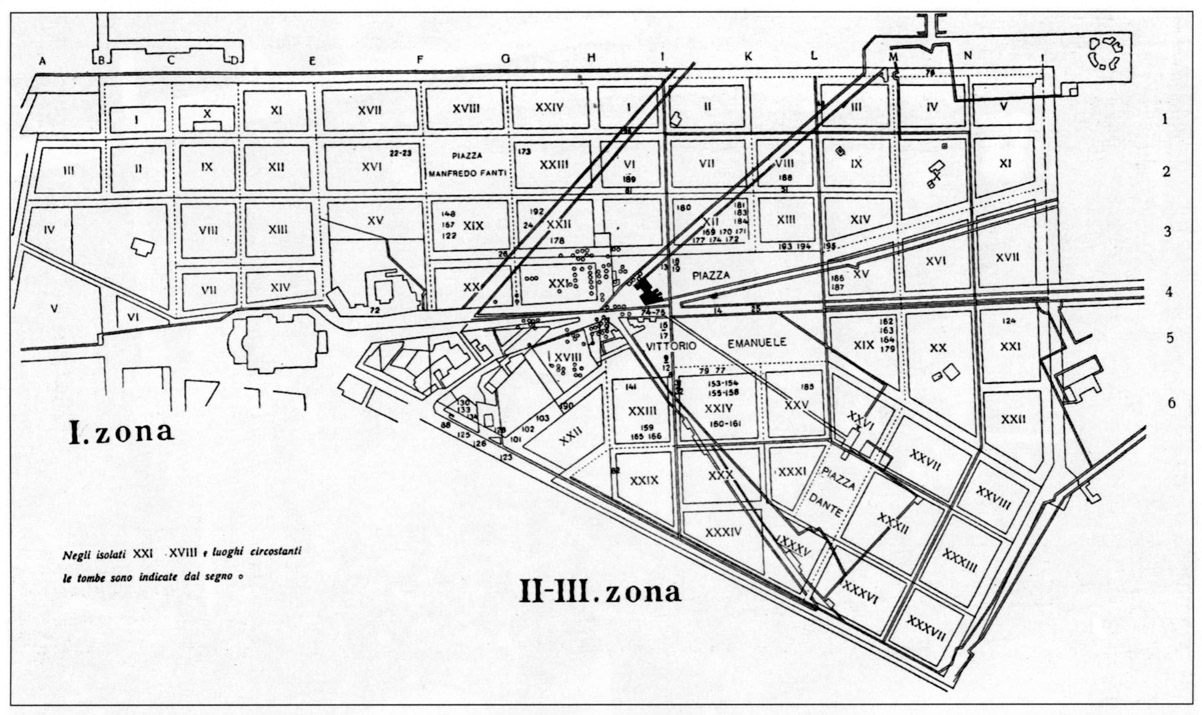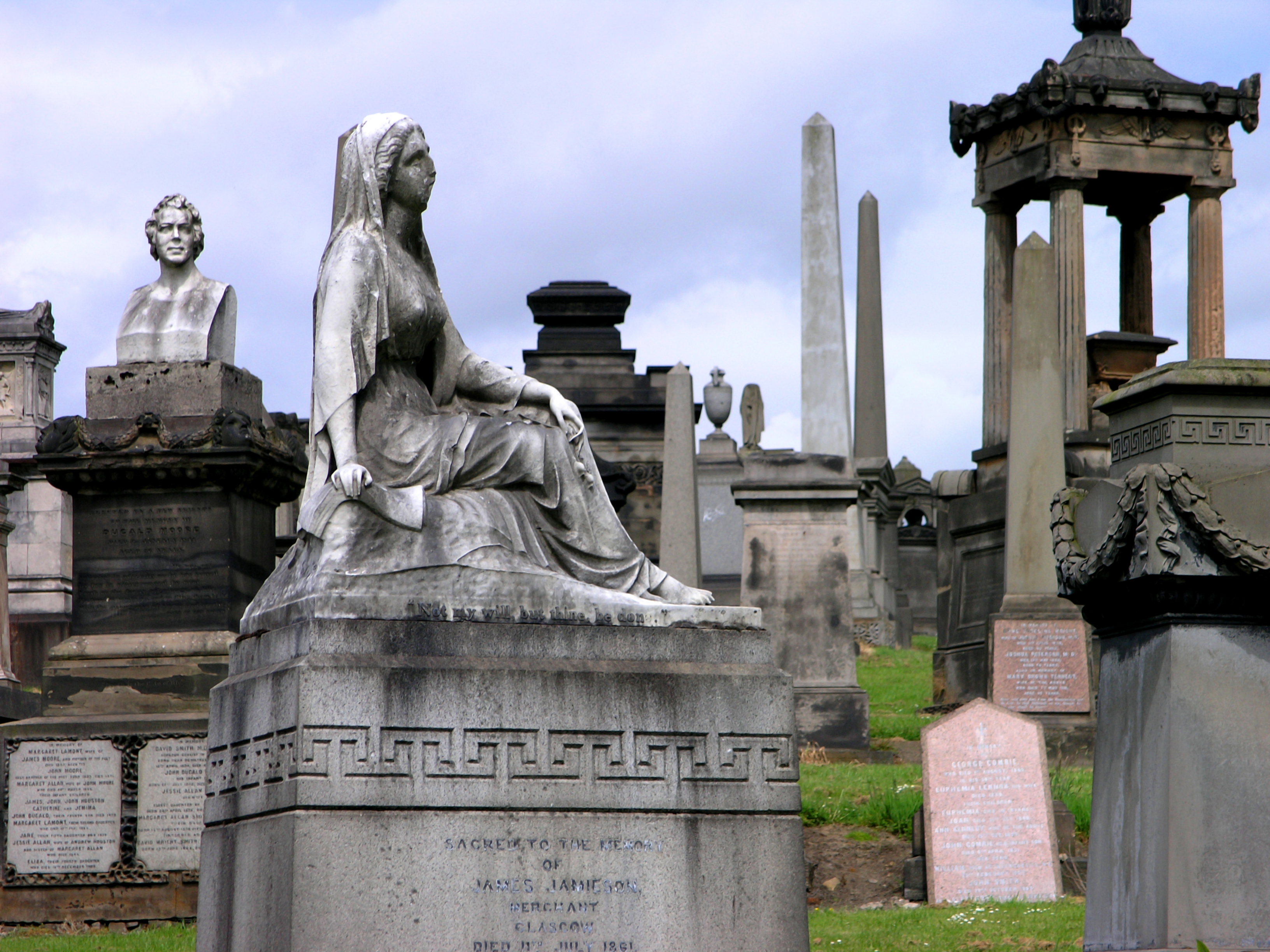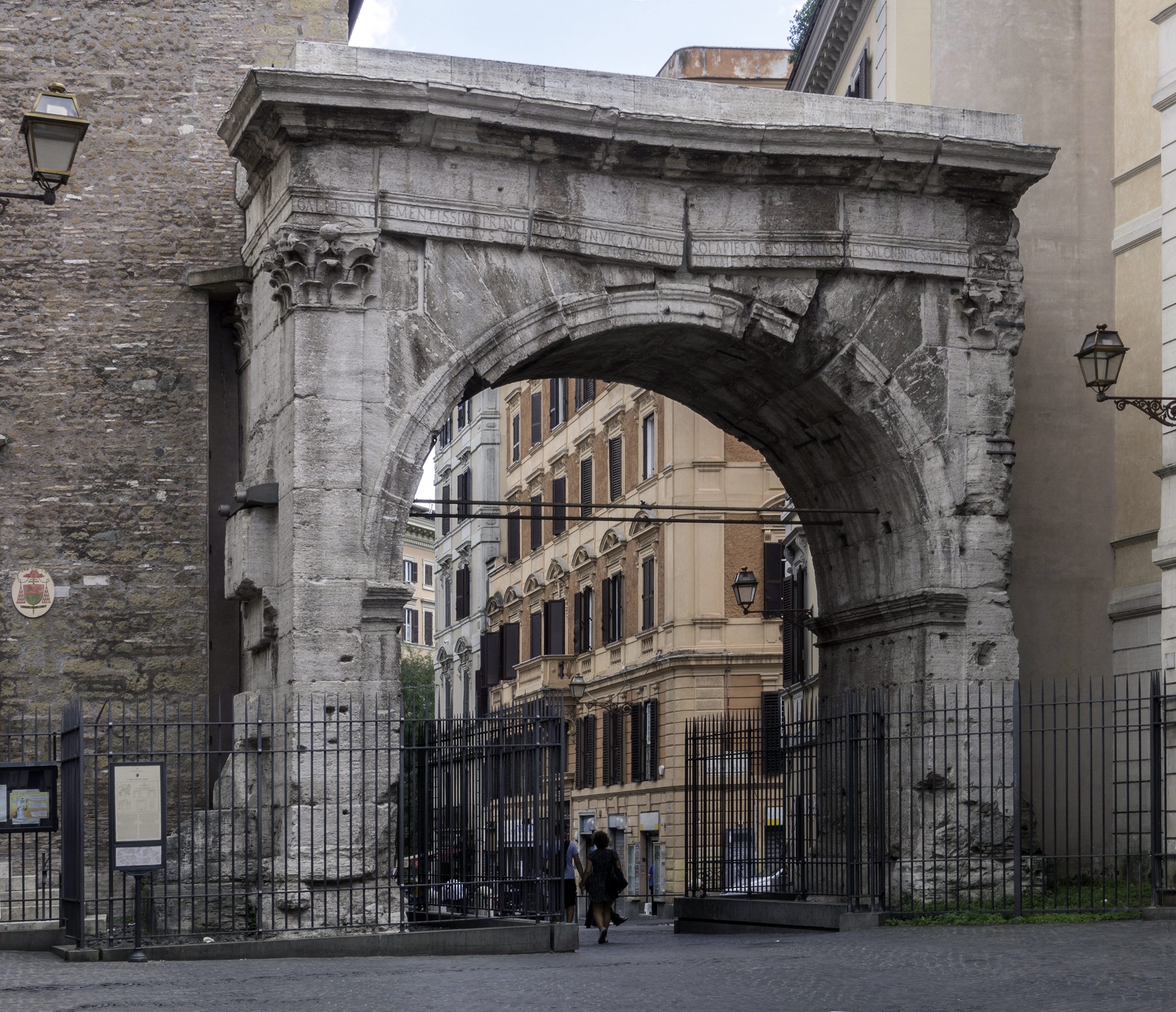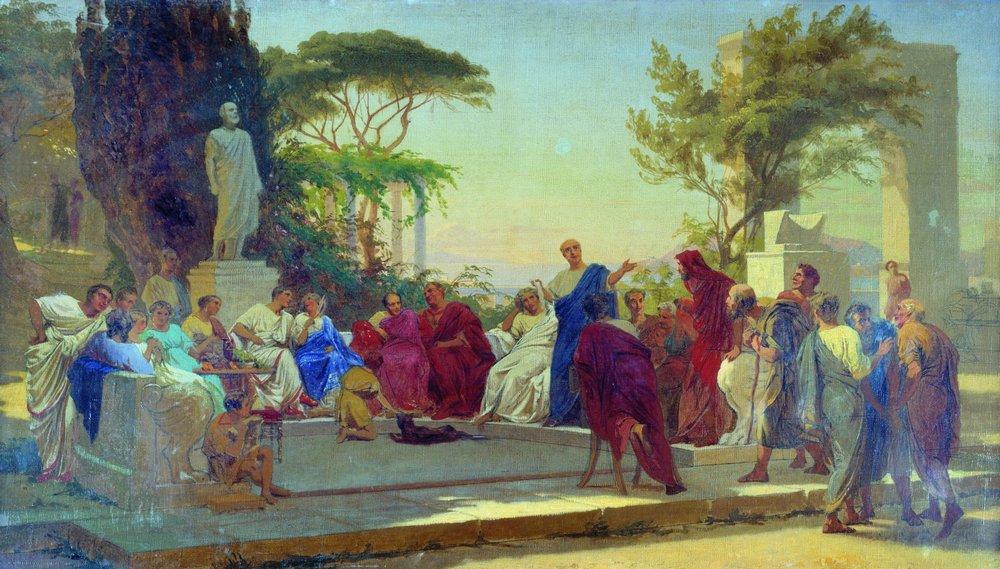|
Puticuli
Puticuli were open pits used as mass graves for the poor in ancient Rome. According to Varro, a Roman scholar, ''puticuli'' were located outside of towns. He claims that the name originates from the Latin word for wells and pits, ''putei''. Varro also describes an alternative etymology proposed by his mentor Aelius Stilo. Aelius believed that since the bodies were thrown into the ''puticuli'' to rot, the name originated from the Latin verb, ''putescebant'', meaning "used to rot." Varro also cites another Roman writer named Afranius, who calls the ''puticuli'' "pit-lights." Afranius referred to the ''puticuli'' with these terms since the bodies that were thrown into the grave looked up at the light from the pit. ''Puticuli'' were also filled with waste, animal carcasses, and rubbish; they are sometimes seen as an example of waste management in ancient Rome. Another issue for classicists is the importance of these gravesites to Roman society. It has been argued that the ordered arra ... [...More Info...] [...Related Items...] OR: [Wikipedia] [Google] [Baidu] |
Mass Grave
A mass grave is a grave containing multiple human corpses, which may or may Unidentified decedent, not be identified prior to burial. The United Nations has defined a criminal mass grave as a burial site containing three or more victims of execution, although an exact definition is not unanimously agreed upon. Mass graves are usually created after many people die or are killed, and there is a desire to bury the corpses quickly for sanitation concerns. Although mass graves can be used during major conflicts such as war and crime, in modern times they may be used after a famine, epidemic, or natural disaster. In disasters, mass graves are used for infection and disease control. In such cases, there is often a breakdown of the social infrastructure that would enable proper identification and disposal of individual bodies. Background Definitions Many different definitions have been given. The Bournemouth Protocol on Mass Grave Protection and Investigation focuses on circumstan ... [...More Info...] [...Related Items...] OR: [Wikipedia] [Google] [Baidu] |
Necropoli Esquilina
A necropolis (: necropolises, necropoles, necropoleis, necropoli) is a large, designed cemetery with elaborate tomb monuments. The name stems from the Ancient Greek ''nekropolis'' (). The term usually implies a separate burial site at a distance from a city, as opposed to tombs within cities, which were common in various places and periods of history. They are different from grave fields, which did not have structures or markers above the ground. While the word is most commonly used for ancient sites, the name was revived in the early 19th century and applied to planned city cemeteries, such as the Glasgow Necropolis. In the ancient world Egypt Ancient Egypt is noted for multiple necropoleis and they are major archaeological sites for Egyptology Egyptology (from ''Egypt'' and Ancient Greek, Greek , ''wiktionary:-logia, -logia''; ) is the scientific study of ancient Egypt. The topics studied include ancient Egyptian History of Egypt, history, Egyptian language, languag ... [...More Info...] [...Related Items...] OR: [Wikipedia] [Google] [Baidu] |
Cemeteries And Tombs In Rome
A cemetery, burial ground, gravesite, graveyard, or a green space called a memorial park or memorial garden, is a place where the remains of many dead people are buried or otherwise entombed. The word ''cemetery'' (from Greek ) implies that the land is specifically designated as a burial ground and originally applied to the Roman catacombs. The term ''graveyard'' is often used interchangeably with cemetery, but a graveyard primarily refers to a burial ground within a churchyard. The intact or cremated remains of people may be interred in a grave, commonly referred to as burial, or in a tomb, an "above-ground grave" (resembling a sarcophagus), a mausoleum, a columbarium, a niche, or another edifice. In Western cultures, funeral ceremonies are often observed in cemeteries. These ceremonies or rites of passage differ according to cultural practices and religious beliefs. Modern cemeteries often include crematoria, and some grounds previously used for both continue ... [...More Info...] [...Related Items...] OR: [Wikipedia] [Google] [Baidu] |
Death Customs
Death is dealt with differently in cultures around the world, and there are ethical issues relating to death, such as martyrdom, suicide and euthanasia. Death refers to the permanent termination of life-sustaining processes in an organism, i.e. when all biological systems of a human being cease to operate. Death and its spiritual ramifications are debated in every manner all over the world. Most civilizations dispose of their dead with rituals developed through spiritual traditions. Disposal of remains In most cultures, after the last offices have been performed and before the onset of significant decay, relations or friends arrange for ritual disposition of the body, either by destruction, or by preservation, or in a secondary use. In the US, this frequently means either cremation or interment in a tomb. There are various methods of destroying human remains, depending on religious or spiritual beliefs, and upon practical necessity. Cremation is a very old and quite common cus ... [...More Info...] [...Related Items...] OR: [Wikipedia] [Google] [Baidu] |
Burial Monuments And Structures In Italy
Burial, also known as interment or inhumation, is a method of final disposition whereby a dead body is placed into the ground, sometimes with objects. This is usually accomplished by excavating a pit or trench, placing the deceased and objects in it, and covering it over. A funeral is a ceremony that accompanies the final disposition. Evidence suggests that some archaic and early modern humans buried their dead. Burial is often seen as indicating respect for the dead. It has been used to prevent the odor of decay, to give family members closure and prevent them from witnessing the decomposition of their loved ones, and in many cultures it has been seen as a necessary step for the deceased to enter the afterlife or to give back to the cycle of life. Methods of burial may be heavily ritualized and can include natural burial (sometimes called "green burial"); embalming or mummification; and the use of containers for the dead, such as shrouds, coffins, grave liners, and burial ... [...More Info...] [...Related Items...] OR: [Wikipedia] [Google] [Baidu] |
Tufa
Tufa is a variety of limestone formed when carbonate minerals precipitation (chemistry), precipitate out of water in ambient temperature, unheated rivers or lakes. hot spring, Geothermally heated hot springs sometimes produce similar (but less porous) carbonate deposits, which are known as ''travertine'' or ''thermogene travertine''. Tufa is sometimes referred to as ''meteogene travertine''. Classification and features Modern and fossil tufa deposits abound with wetland plants; as such, many tufa deposits are characterised by their large wikt:macrobiology, macrobiological component, and are highly porous. Tufa forms either in fluvial channels or in lacustrine environments. Ford and Pedley (1996) provide a review of tufa systems worldwide. Fluvial deposits Deposits can be classified by their depositional environment (or otherwise by vegetation or petrography, petrographically). Pedley (1990) provides an extensive classification system, which includes the following classes of fl ... [...More Info...] [...Related Items...] OR: [Wikipedia] [Google] [Baidu] |
Servian Wall
The Servian Wall (; ) is an ancient Roman defensive barrier constructed around the city of Rome in the early 4th century BC. The wall was built of volcanic tuff and was up to in height in places, wide at its base, long, and is believed to have had 16 main gates, of which only one or two have survived, and enclosed a total area of . In the 3rd century AD it was superseded by the construction of the larger Aurelian Walls as the city of Rome grew beyond the boundary of the Servian Wall. History The wall is named after the sixth Roman King, Servius Tullius. The literary tradition stating that there was some type of defensive wall or earthen works that encircled the city of Rome dating to the 6th century BC has been found to be false. The main extent of the Servian Wall was built in the early 4th century BC, during what is known as the Roman Republic. Construction The Servian Wall was originally built from large blocks of Cappellaccio tuff (a volcanic rock made from ash and rock ... [...More Info...] [...Related Items...] OR: [Wikipedia] [Google] [Baidu] |
Gaius Maecenas
Gaius Cilnius Maecenas ( 13 April 68 BC – 8 BC) was a friend and political advisor to Octavian (who later reigned as emperor Augustus). He was also an important patron for the new generation of Augustan poets, including both Horace and Virgil. In many languages, his name is an eponym for "patron of arts". During the reign of Augustus, Maecenas served as a quasi-culture minister to the Roman emperor but in spite of his wealth and power he chose not to enter the Roman Senate, Senate, remaining of Equites, equestrian rank. Life Expressions in Propertius seem to imply that Maecenas had taken some part in the campaigns of Battle of Mutina, Mutina, Battle of Philippi, Philippi, and Battle of Perugia, Perugia. He prided himself on his ancient Etruscan civilization, Etruscan lineage, and claimed descent from the princely house of the Cilnia (gens), Cilnii, who excited the jealousy of their townsmen by their preponderant wealth and influence at Arretium in the 4th century BC. Horace mak ... [...More Info...] [...Related Items...] OR: [Wikipedia] [Google] [Baidu] |
Horace
Quintus Horatius Flaccus (; 8 December 65 BC – 27 November 8 BC), Suetonius, Life of Horace commonly known in the English-speaking world as Horace (), was the leading Roman lyric poet during the time of Augustus (also known as Octavian). The rhetorician Quintilian regarded his '' Odes'' as the only Latin lyrics worth reading: "He can be lofty sometimes, yet he is also full of charm and grace, versatile in his figures, and felicitously daring in his choice of words."Quintilian 10.1.96. The only other lyrical poet Quintilian thought comparable with Horace was the now obscure poet/metrical theorist, Caesius Bassus (R. Tarrant, ''Ancient Receptions of Horace'', 280) Horace also crafted elegant hexameter verses ('' Satires'' and '' Epistles'') and caustic iambic poetry ('' Epodes''). The hexameters are amusing yet serious works, friendly in tone, leading the ancient satirist Persius to comment: "as his friend laughs, Horace slyly puts his finger on his every fault; once let ... [...More Info...] [...Related Items...] OR: [Wikipedia] [Google] [Baidu] |
Esquiline Hill
The Esquiline Hill (; ; ) is one of the Seven Hills of Rome. Its southernmost cusp is the ''Oppius'' ( Oppian Hill). Etymology The origin of the name ''Esquiline'' is still under much debate. One view is that the hill was named after the abundance of ( Italian oaks) growing there. Another view is that, during Rome's infancy, the Capitolium, the Palatinum, and the northern fringes of the Caelian were the most-populated areas of the city, whose inhabitants were considered ("in-towners"); those who inhabited the external regions – Aurelian, Oppius, Cispius, Fagutal – were considered ("suburbanites"). History The Esquiline Hill includes three prominent spurs, which are sometimes called "hills" as well: *Cispian (''Cispius'') – northern spur * Oppian (''Oppius'') – southern spur *Fagutal (''Fagutalis'') – western spur Rising above the valley in which was later built the Colosseum, the Esquiline was a fashionable residential district. According to Livy, th ... [...More Info...] [...Related Items...] OR: [Wikipedia] [Google] [Baidu] |
Rodolfo Lanciani
Rodolfo Amedeo Lanciani (1 January 1845 – 22 May 1929) was an Italian archaeologist, a pioneering student of ancient Roman topography. Among his many excavations was that of the House of the Vestals in the Roman Forum. Lanciani earned LL.D. degrees from Aberdeen, Glasgow, and Harvard and a Ph.D. degree from Würzburg. Life Lanciani was born in Rome, although some state he was born in Montecelio, now Guidonia Montecelio. He was professor of Roman topography at the Università di Roma from 1878 until 1927. He is known today chiefly for his ''Forma Urbis Romae'' (1893‑1901) and the ''Storia degli scavi'', a regular summary of Roman excavations that started appearing in 1902. His students included Giulio Giglioli. Together with important British art historians such as Austen Henry Layard he re-edited the original 1843 guidebook to Rome for John Murray. He was a member of the Accademia dei Lincei, the Academia di S. Lucia, the Berlin Institute, the Royal Academy of Belgium ... [...More Info...] [...Related Items...] OR: [Wikipedia] [Google] [Baidu] |
Archaeological Excavation
In archaeology, excavation is the exposure, processing and recording of archaeological remains. An excavation site or "dig" is the area being studied. These locations range from one to several areas at a time during a project and can be conducted over a few weeks to several years. Excavation involves the recovery of several types of data from a site. This data includes Artifact (archaeology), artifacts (portable objects made or modified by humans), Feature (archaeology), features (non-portable modifications to the site itself such as post molds, burials, and hearths), Ecofact, ecofacts (evidence of human activity through organic remains such as animal bones, pollen, or charcoal), and archaeological context (relationships among the other types of data).Kelly&Thomas (2011). ''Archaeology: down to earth'' (4th ed.). Belmont, Calif.: Wadsworth, Cengage Learning. Before excavating, the presence or absence of archaeological remains can often be suggested by, non-intrusive remote se ... [...More Info...] [...Related Items...] OR: [Wikipedia] [Google] [Baidu] |










